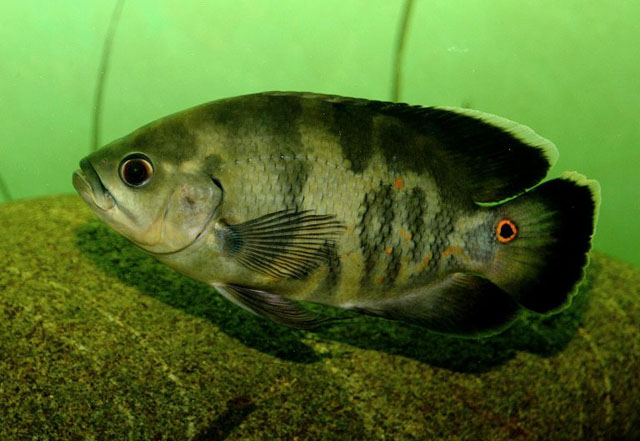| Cichlidae (Cichlids), subfamily: Astronotinae |
| 45.7 cm TL (male/unsexed); max.weight: 1,580.0 g |
|
benthopelagic; freshwater; pH range: 6 - 8; dH range: 5 - 19 |
| South America: western Amazon and Orinoco basins. Introduced elsewhere. |
|
Dorsal spines (total): 12-14; Dorsal soft rays (total): 17-21; Anal spines: 3-3; Anal soft rays: 16-20. Large mouth with thick lips; 7 preopercular pores; first gill arch without lobe; gill rakers short and thick with many denticles; dorsal and anal fins bases densely scaled; many branched rays; body color dark with bright orange opercle margin and ventral parts of the lateral sides of the body; often a black rounded blotch with orange margin at caudal fin base (Ref. 35237). |
| Preferably inhabits quiet shallow waters in mud-bottomed and sand-bottomed canals and ponds (Ref. 5723). Feeds on small fish, crayfish, worms and insect larvae. Quite popular with aquarists but not for aquaculturists because of its slow growth (Ref. 35237). Maximum length 40 cm TL (Ref. 5723). A highly esteemed food fish in South America (Ref. 44091). |
|
Least Concern (LC); Date assessed: 04 November 2020 Ref. (130435)
|
| harmless |
Source and more info: www.fishbase.org. For personal, classroom, and other internal use only. Not for publication.

